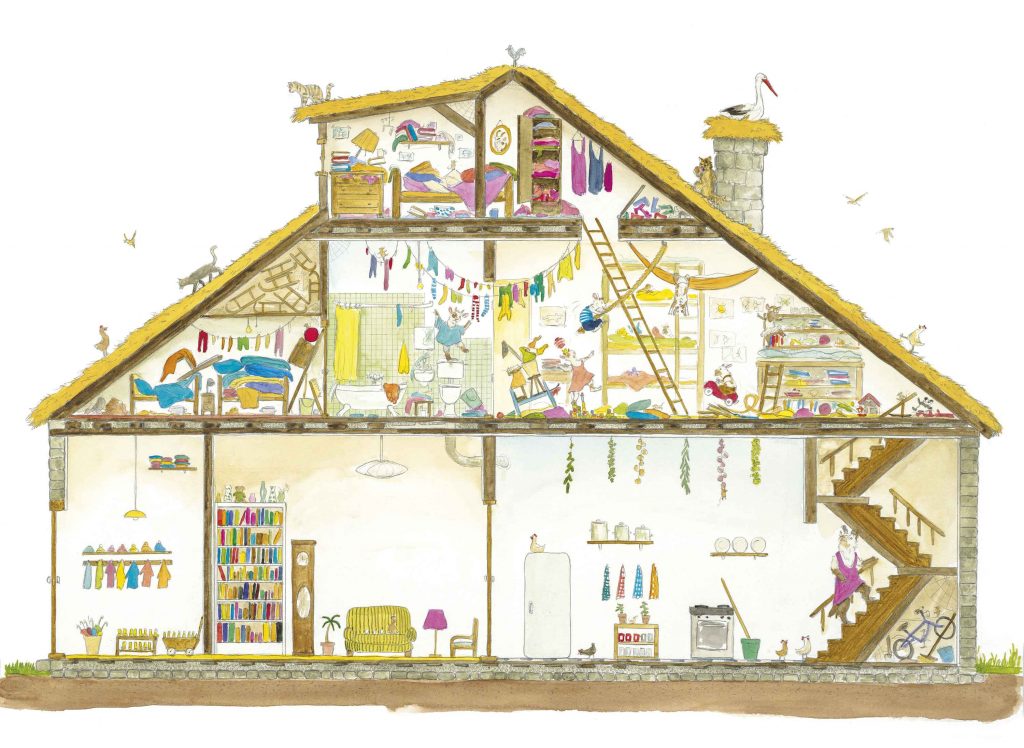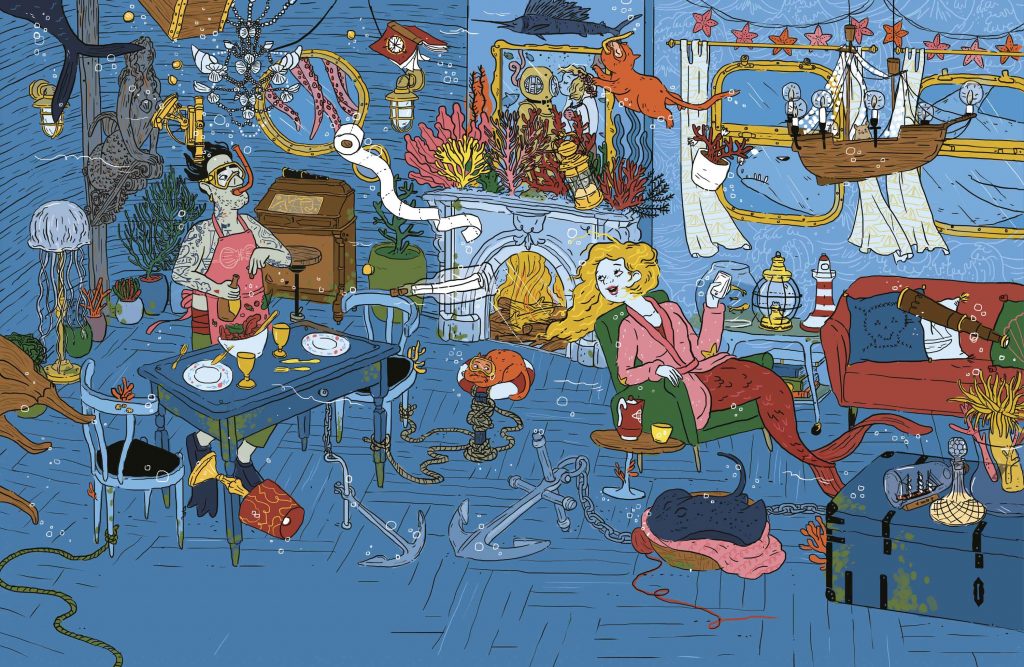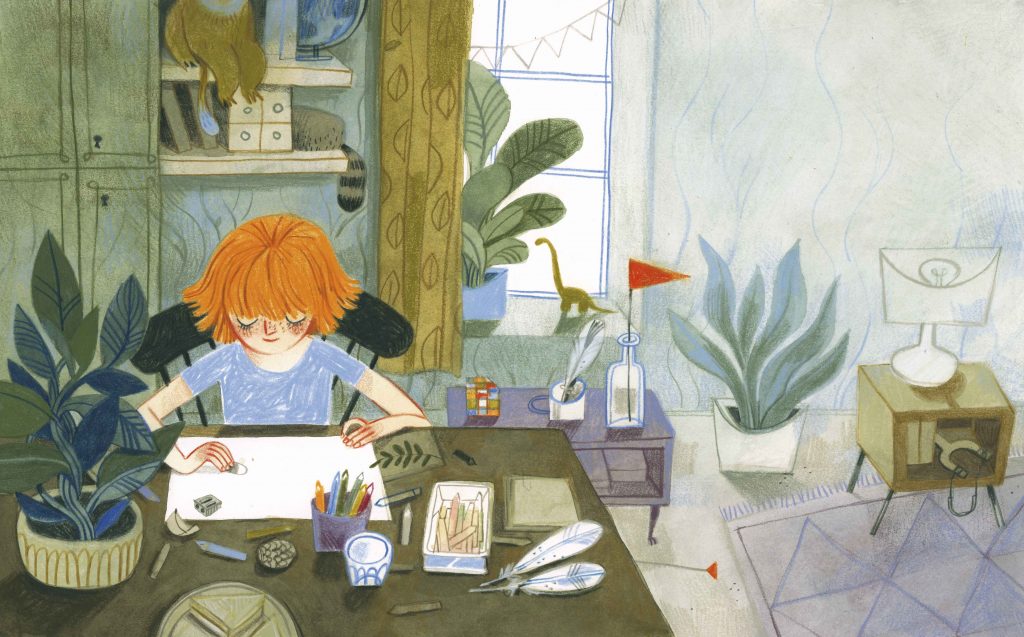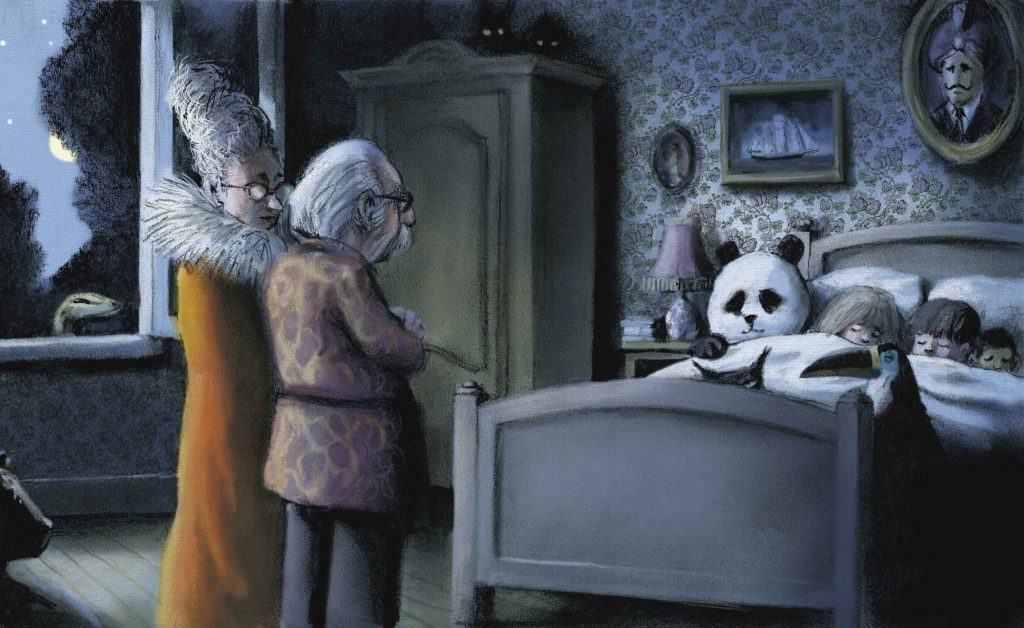The selva is an expanse of trees and shrubs growing naturally across a broad area of land. Comparable to a wood or forest, the selva has both a literal meaning, a natural territory where plants grow spontaneously, and a metaphorical sense linked to the idea of a complex multitude of highly diverse things haphazardly piled up, where chaos and a general feeling of confusion reign. The messed-up vision of the selva appeals. The image successfully relates the story of our daily life in these restless and complicated times: from the thoughts that crowd our minds and the numerous contradictory ties we establish in our lives, to the objects we pile up and hoard in our homes and the groups of people who perhaps sometimes unwisely gather outside their own four walls.
The selva is also a good starting point from which to begin exploring the relationship between “wildness” and “domesticity” experienced in connection with our inner nature and that of other living creatures.
The selected illustrated volumes explore daily life, both intimate and domestic, as an exotic domain yet to be discovered. Life lived at “home” mixes with ways of behaving, habits, states of mind, the memories of animals, plants, of situations connected to strongly evocative literary locations. The intimacy of the domestic landscape is contaminated, it expands, transforms into the freedom of living and also rethinks its own nature through a zoocentric or plantcentric view. It calls for traditional anthropological perspectives to be turned upside-down and our relationships with others, the environment and ourselves to be read from a different standpoint.
Marnie Campagnaro, “Selve domestiche“, in “The Images of Fantasy 38”, catalog of the International Exhibition of Illustration for Children, Tapirulan Editions, 2020
Illustration by Einat Tsarfati, from the book I miei vicini, published by Editrice Il Castoro (detail).









